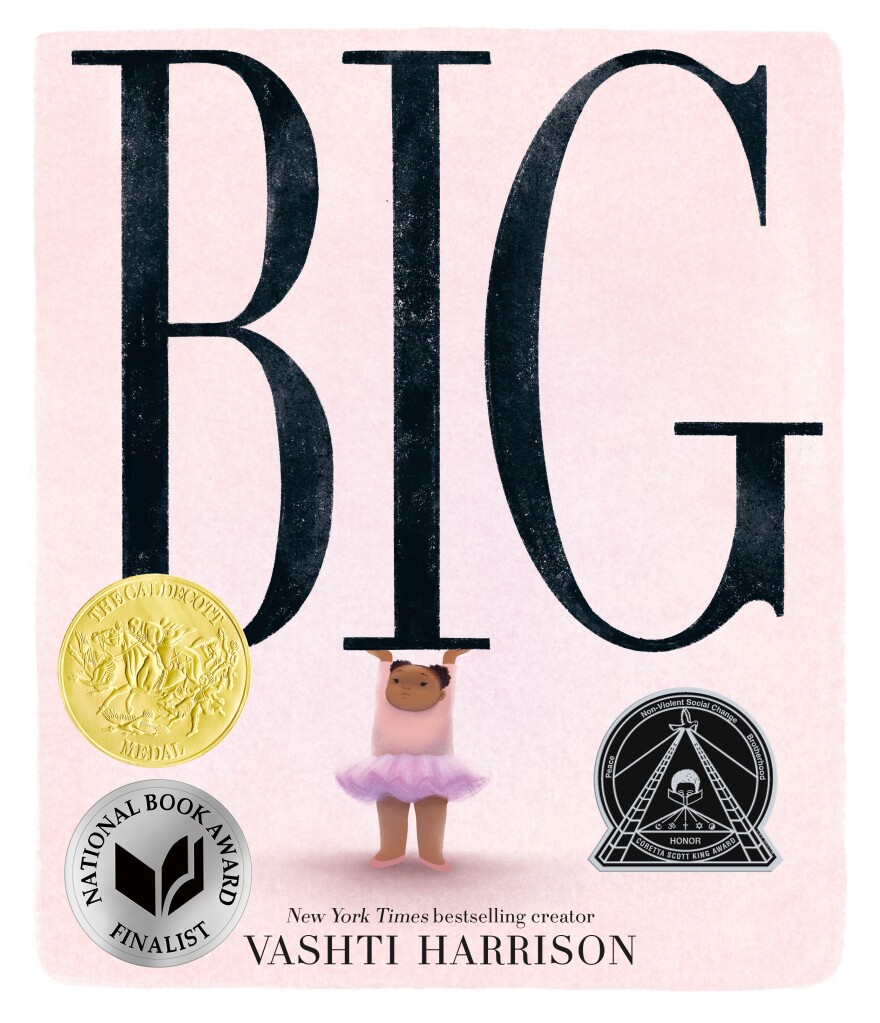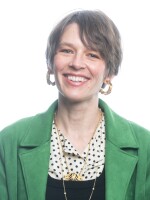The Caldecott Medal recognizes the “most distinguished American picture book for children” in a given year. 2024’s winner is Big by author and illustrator Vashti Harrison. Harrison grew up on Virginia’s Eastern Shore and graduated from the University of Virginia.
VPM News Morning Edition host Phil Liles spoke with her about the book.
The following has been edited for length and clarity.
Phil Liles: First of all, congratulations on the Caldecott Medal that you received.
Vashti Harrison: Thank you so much.
How did it feel when that call came in and you got that award?
I had a lot of feelings. I was really overwhelmed and excited and honored, but certain that I couldn’t possibly have won the Caldecott Medal. I really hoped for a Caldecott Honor. I thought it might be too big of a dream to dream for the top prize.
But I received the call on a Sunday night before the Youth Media Awards at the [American Library Association] winter conference. And I had received a call earlier in the day around 1:30 p.m. — I got a call from the Coretta Scott King committee, to let me know that Big had been selected for an illustrator honor and an author honor. So that was incredible.
I was in the car with my family when I heard, and we were all so excited. And then I thought, “Well, maybe — maybe I might receive another call today from another committee, and waited and waited and was absolutely convinced that it wasn’t going to happen. Then around 9:30 that night — so eight hours later — I got a call, and I was just floored. It was incredible.

I just want to say that I read the book — I went to my library here — and it was just so lovely. It brought tears to my eyes. For our listeners who haven’t read the book, it’s a story of a young child. Can you tell us about her?
So the main character in this book doesn’t have a name. I wanted to make a story that felt like it could resonate with lots of different readers. Part of her story is inspired by my childhood, but I didn’t want her to be me. She’s just a kid growing and figuring out who she is, figuring out what she likes. And as she’s growing, her body is changing.
I really wanted to touch on how when we use our words with children — “big” can be a word of affirmation when a child is very young. We say, “Oh my goodness, you’re such a big girl. You’re a big girl now.” And that's a good thing. But “big” changes meaning over, usually, a girl’s life. And I wanted to focus on that specifically, particularly telling the story about a Black girl.
While it’s not exactly directly on the page, something that I was thinking about while writing the story and illustrating was touching on the subject of adultification bias.
Around the time that I started working on my first book, Little Leaders: Bold Women in Black History, I read a study from the Georgetown Law Center on Poverty and Inequality called Girlhood Interrupted. It was my first introduction to the term “adultification bias” — that is, the perception that some children are more “adult,” more mature, more responsible and knowledgeable than their age would suggest.
The study found that adults view Black girls as young as the age of five as less innocent and more adult than their white counterparts. This results in adults believing that Black girls need less nurturing, less protection, that they need to be comforted less and that they know more about adult topics. So I was really thinking about how intensely sad and tragic that is.
I wanted to address it in my work in some way and create a narrative that encouraged readers to empathize with a child’s experience and to really feel for her. I wanted people to say, “Oh, my gosh, aww,” and want to give her a hug and take care of her and nurture her.
I wondered if you might just read a few of the first pages of the book.
Sure.
Once there was a girl with a big laugh, and a big heart, and very big dreams. She learned her ABCs and 1-2-3s. She always said “please” and “thank you” and even put away all her toys. At dinner, she ate all her food.
“What a big girl you are,” the adults would say. And it was good. She grew and learned and laughed and dreamed and grew and grew and grew. And it was good.
Until it wasn’t.
I love the color pink that’s throughout the book. How did you go about thinking about the illustrations?
Thank you. The main character in this book loves dance. So when I work on a book, I typically choose a color to associate with that character, and I try to build a palette from there.
So this really light, lovely ballet pink is what we see present throughout the book. But we see glimpses of a much more saturated version of that pink. For me, I wanted that to represent her potential — the character’s potential of who she might become. We see glimpses of that when she’s dancing and feeling fully free. We see that color disappear entirely in the lowest lows of the book, and we see it return when she’s able to finally make space for herself.
But there are very few words in this book — there are less than 150 words. So I wanted to use the color and the composition to help tell the story — tell the emotional highs and lows, but also to communicate what she’s feeling and invite the reader to feel like we’re fully within her perspective.
Is there any new, fun project in the works?
I am currently working on illustrations for a new book. It is a book that I did not write. It’s written by Tracy Todd.
In my personal practice, I feel really excited about making three-dimensional objects. I really am interested in working on toys and toy design. I really think about making work for young people and meeting kids where they are. So I’m excited to expand beyond 2D illustration and push myself to try new media, including film and television animation.








